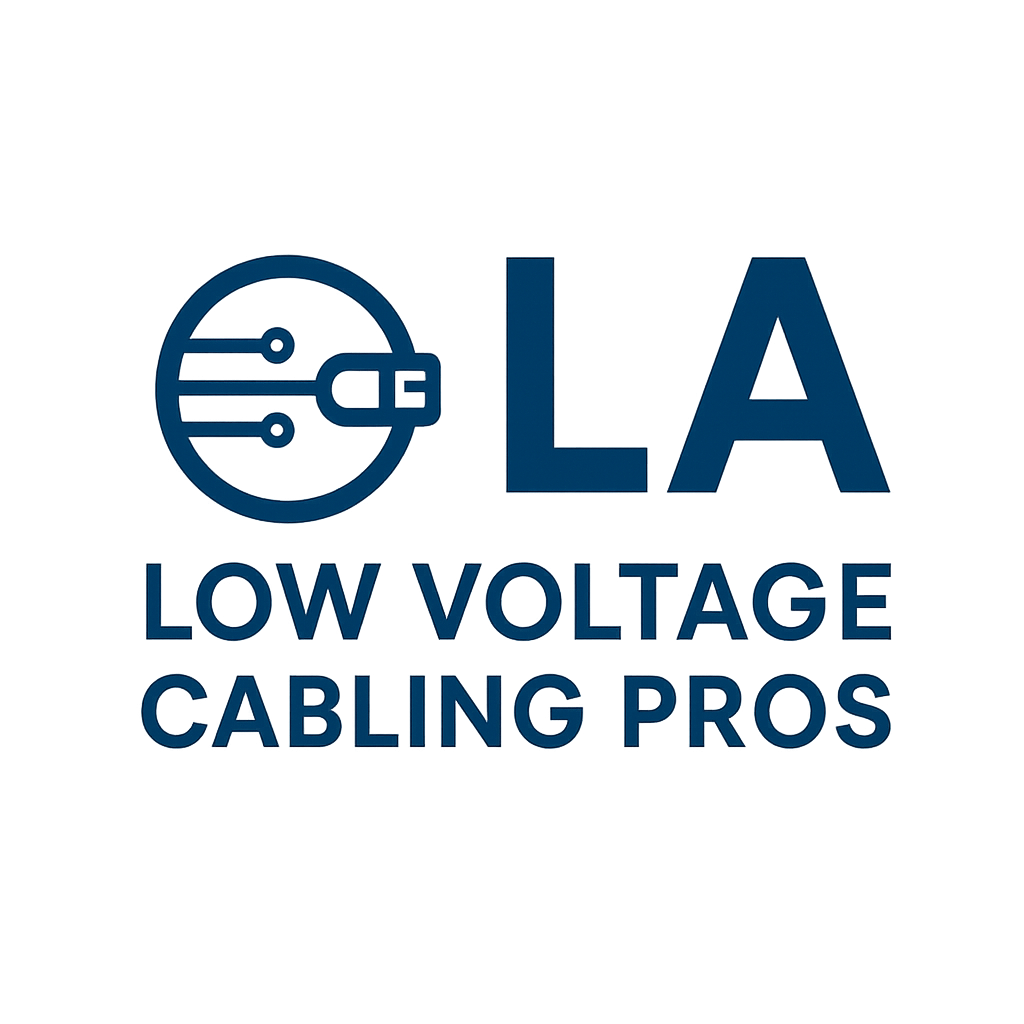What Is Low Voltage Cabling? A Complete Guide for Modern Homes and Businesses
If you’ve ever wondered what low voltage cabling is or why it’s essential for today’s technology-driven spaces, you’re not alone. From smart homes and CCTV systems to office networks and security alarms, low voltage cabling powers the systems that keep everything connected, efficient, and safe.
Understanding how it works — and why it’s different from standard electrical wiring — can help you make smarter choices for your home or business infrastructure. At LA Low Voltage Cabling Pros, we specialize in professional wiring and network solutions throughout Los Angeles.
What Is Low Voltage Cabling?
Low voltage cabling refers to electrical wiring that carries 50 volts or less, unlike standard power cables that transmit 120V or 240V. These cables are used to run data, communication, and control systems that don’t require high electrical current.
Some of the most common examples of low voltage systems include:
- Internet and network cabling (CAT5e, CAT6, CAT6a)
- Security cameras (CCTV systems)
- Access control systems
- Fire alarms and smoke detectors
- Audio/visual systems
- Smart home automation
- Intercoms and doorbells
In short, low voltage cabling delivers connectivity and communication, not power.
Why Low Voltage Cabling Is So Important
Low voltage wiring has become the backbone of modern living and business operations. Nearly every technology we use daily — Wi-Fi, phones, cameras, smart lights, and building management systems — relies on these networks.
Here’s why it’s so valuable:
- Improved safety: Operates at safer voltage levels with less fire and shock risk.
- Energy efficiency: Uses minimal electricity while supporting advanced systems.
- Future scalability: Easy to upgrade as new technologies emerge.
- Cleaner design: Reduces clutter and allows for organized, structured wiring.
- Cost-effective maintenance: Easier to service and reconfigure without major electrical work.
When installed correctly, low voltage cabling provides both performance and flexibility — perfect for homes, offices, and commercial buildings.
How Low Voltage Cabling Works
Low voltage systems typically rely on a structured cabling design that connects all devices to a central control point, such as a network switch, hub, or security panel.
For example:
- In an office, CAT6 network cables link each workstation to a server room.
- In a smart home, low voltage wires connect lights, thermostats, and speakers to a control hub.
- In a retail store, low voltage lines power security cameras and digital signage.
Each system runs independently but within a single, organized infrastructure — making it easy to manage and expand as needed.
Common Types of Low Voltage Cables
Here are some of the most popular types of low voltage cabling:
- CAT5e / CAT6 / CAT6a Ethernet cables – For internet and network connectivity.
- Coaxial cable – Used for cable TV and security camera systems.
- Fiber optic cable – For ultra-high-speed data transmission.
- Speaker wire – For audio and entertainment systems.
- Thermostat wire – For HVAC controls.
- Alarm cable – For fire and security systems.
Each cable type is designed for a specific purpose — and using the right one ensures optimal system performance. Choosing the correct wiring standard is essential for a reliable network. See our detailed T568A vs T568B wiring guide for proper installation tips.
Low Voltage vs. High Voltage: What’s the Difference?
| Feature | Low Voltage Cabling | High Voltage Cabling |
|---|---|---|
| Voltage Range | 50V or below | 120V or higher |
| Primary Use | Data, communication, control systems | Powering heavy appliances and outlets |
| Safety | Safer for handling and installation | Requires strict electrical safety protocols |
| Installation | Typically installed by low voltage technicians | Requires licensed electricians |
| Applications | Networking, CCTV, smart homes | Lighting, HVAC, heavy machinery |
Knowing the difference helps you hire the right professional for each type of project.
Who Installs Low Voltage Cabling?
Low voltage cabling should always be installed by a licensed low voltage contractor or technician. These professionals are trained to:
- Design and plan network layouts
- Route and terminate cables properly
- Follow national and state wiring codes
- Test and certify every connection for reliability
In California, for example, technicians typically hold a C-7 Low Voltage Systems License, ensuring all installations meet local and state regulations.
Applications of Low Voltage Cabling in Everyday Life
Low voltage systems are everywhere — even if you don’t realize it. Here’s where they make the biggest impact:
- Homes: Smart lighting, Wi-Fi, home security, entertainment systems.
- Offices: Internet connectivity, VoIP phones, access control, and surveillance.
- Schools and campuses: Security networks, classroom technology, and PA systems.
- Retail stores: POS systems, display screens, and environmental sensors.
- Healthcare facilities: Patient monitoring, intercoms, and emergency alerts.
Wherever data or communication is needed, low voltage cabling is working behind the scenes.
Benefits of Professional Low Voltage Installation
Hiring a professional installer ensures:
- Clean, organized, and labeled cable management
- Optimal network performance and reliability
- Compliance with national and state electrical codes
- Scalable systems that can grow with your needs
Professionals also provide documentation, testing, and certification — giving you peace of mind that your system meets both safety and performance standards.
Upgrade to Low Voltage Systems Today
As homes and businesses continue to evolve, low voltage cabling remains the key to smarter, more connected environments. Whether you’re building a new property or modernizing your existing space, investing in quality low voltage infrastructure sets you up for long-term success. Understanding the potential costs helps you plan effectively. Check out our guide on the cost to install low voltage cabling in Los Angeles for detailed pricing information.
Reach out to your trusted low voltage cabling experts today to design a system that delivers speed, efficiency, and reliability — all while keeping your network ready for the future.
